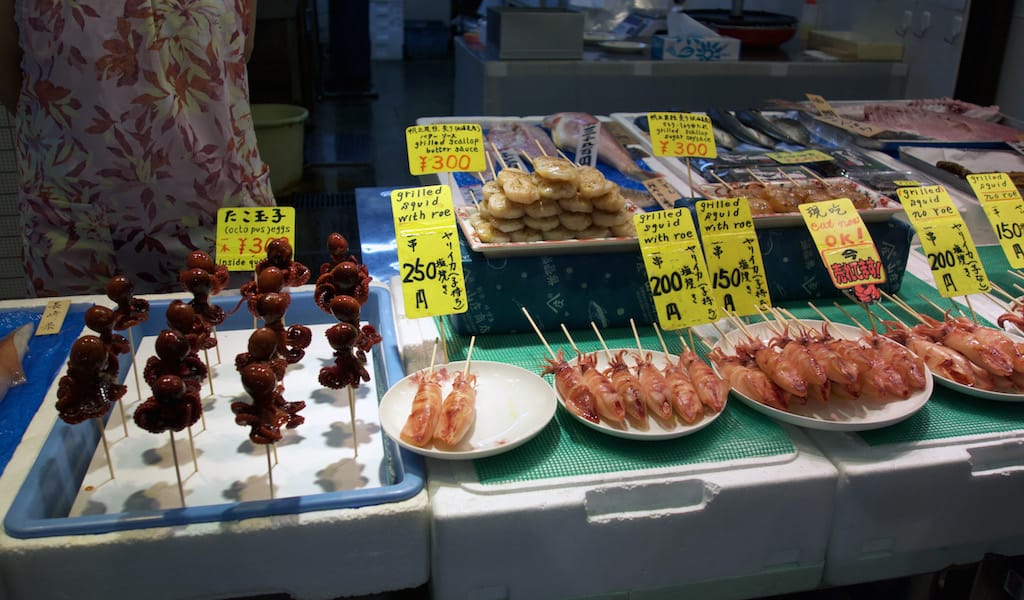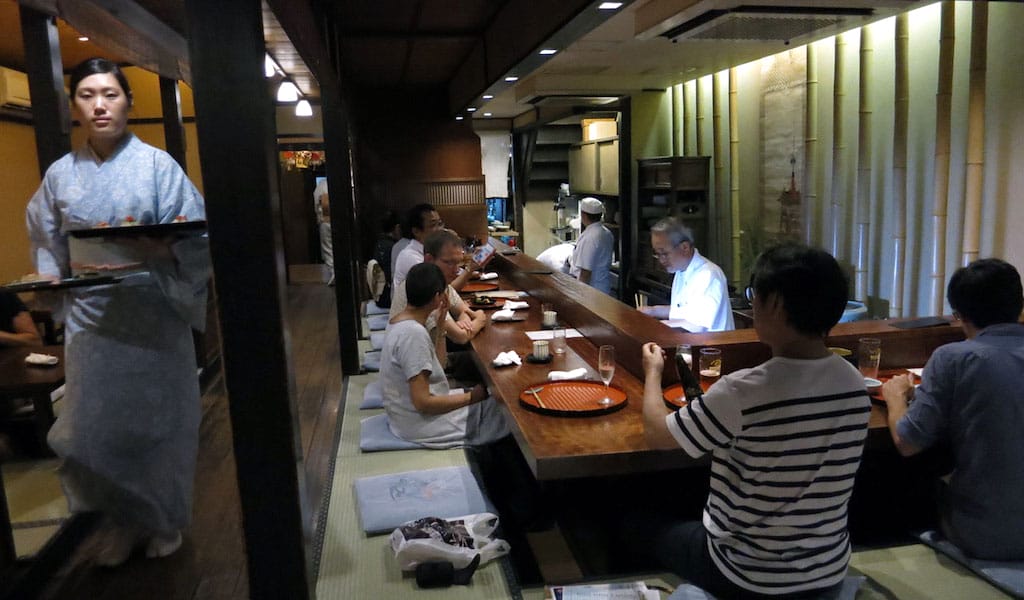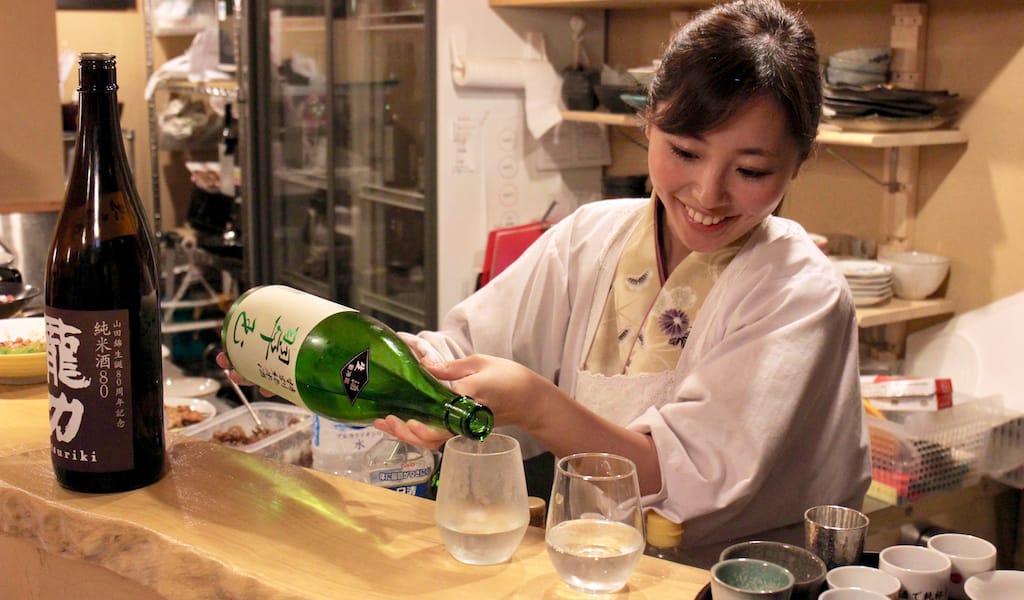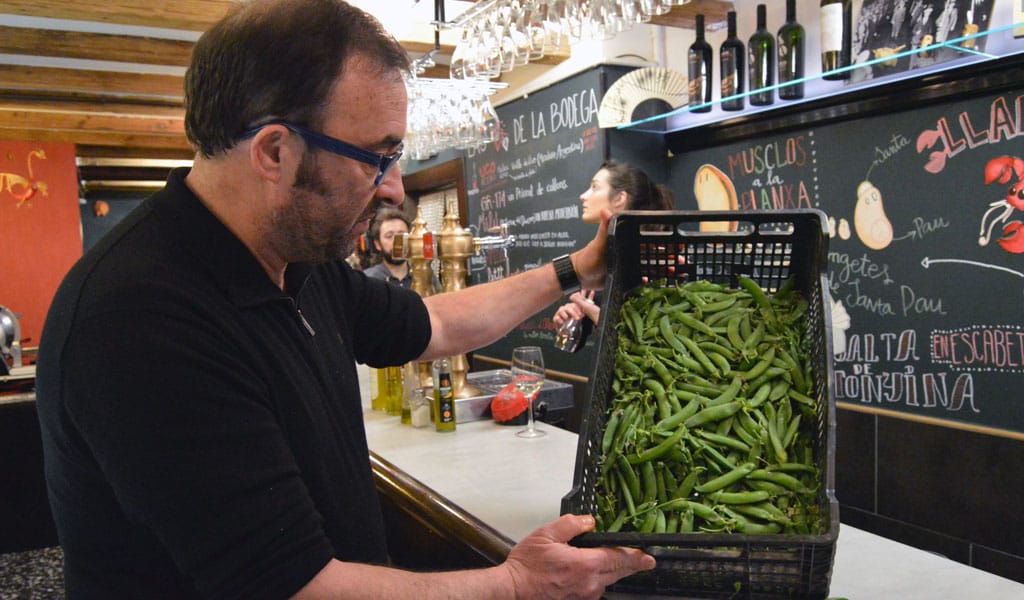While most artisanal markets and mom-and-pop groceries throughout Japan have given way to large supermarket chains and convenience stores, Kyoto still boasts one of the last markets selling local delicacies along with fresh foods and housewares.
Often called “Kyoto’s Kitchen,” Nishiki Market is not like traditional huge bazaars with stalls selling fresh vegetables, fruits and meat. The market’s roots date back almost five centuries, to the fish market that grew up around an underground stream that remains freezing cold throughout the year and historically provided a way to keep fish fresh in a city far from the sea.
The Nishiki Market consists of a shopping street stretching for five city blocks lined with open-fronted retail shops selling everything from seasonings to sake, provisions to pots and pans, crackers to fresh comestibles, and tea to tako tamago, an octopus treat famous at the market. Nishiki is filled with the tastes, smells, sounds and textures that define Japanese food.
Kyoto fare and its culinary focus – from the Imperial Haute Cuisine style of kaiseki (multi-course meals with roots in the Japanese tea ceremony) to the vegetarian shojin ryori cooking developed in the city’s multitude of temples – are unique in Japan and also gaining popularity in the West. Add Kyoto’s obanzai ryori, or home cooking, into the mix, and one can easily look to Nishiki Market as ground zero for supplying the basics of the local cuisine.
The foundation of Kyoto cooking is subtle taste and the use of seasonal ingredients at their finest. A Kyoto chef will look to bring out the essential flavor of materials rather than enhancing or covering with sauces, and Kyoto dishes are generally less salty than Tokyo’s, its neighbor to the north.
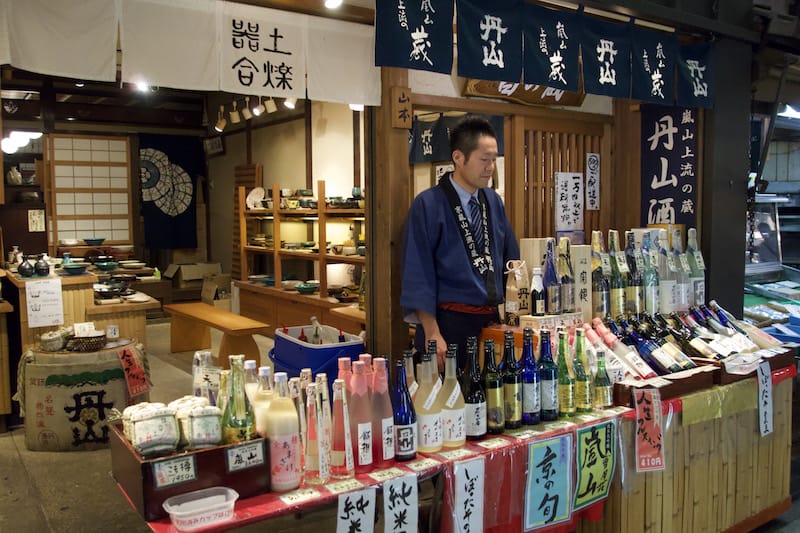
Many people come to Nishiki Market to purchase kitchen utensils, especially knives. One of our prized kitchen knives comes from the Aritsugu shop near the north end of the market. We purchased it years ago and find it a go-to knife for most cooking tasks. The company has been in business since the 16th century and is now run by Shinichiro Terakubo, an 18th-generation blade maker. Aritsugu will engrave a Japanese or Western name (spelled phonetically in Japanese katakana letters) on the knife to personalize it on request.
Nishiki Market also has great places to purchase fresh food, as well as prepared dishes for takeaway. It’s possible to graze around the market and sample many kinds of local delicacies as one wanders and shops. We always try to stop by the stall Nishiki Yamasho for the famous tako tamgo, a small octopus whose head is stuffed with a quail egg and rice, and komochi ika, grilled squid stuffed with its own roe. Both are served on small wooden skewers and easy to eat as one walks around; they can also be packed for takeaway. While eating in public is generally frowned upon in Japan, the rules are relaxed at Nishiki.
Nearby Nishiki Yamasho is our favorite sake seller who gladly offers free sake tastings, a treat after salty foods. Tanabeya Sake sells a variety of Kyoto sakes and they are always ready with information about the brewers. We stopped by recently and discovered Arashiyama Tanzan sake from the Arashiyama district of northern Kyoto. We love its taste, light for a daiginjo, which uses only the center and sweetest part of the rice kernel and usually produces sweeter, heavier sake. It has become our table sake at home.
Nishiki is filled with the tastes, smells, sounds and textures that define Japanese food.
Tanabeya frequently ships it to us from Kyoto because it is rarely found outside the city. They will wrap everything for shipping and transporting, and on a recent visit were happy to throw our other market purchases into the shipping box. They will also prepare sake for a takeaway feast with small disposable sake cups.
Kyoshiki Inoe offers an overflowing assortment of cooked Japanese side dishes for takeaway. Delicacies include an assortment of bean dishes including a hearty mix of beans with sweet potatoes; lotus root; simmered eggplant; pumpkin poached in mirin, a type of rice wine; Japanese-style potato “salada” (the Japanese word for “salad”) with ham; and glass noodle salada. Most are sold in 100-gram increments packed into plastic containers. There are many options for vegetarians, but best to ask if they contain dashi fish stock because usually they do.
Kyoto vegetables, or kyo yasai, are highly regarded in Japan. There are 41 kinds designated as traditional vegetables, and many have unique shapes and colors. Far from the sea, Kyoto has an ideal climate – cold winters and extremely hot summers – for cultivating vegetables, and it’s said that the area’s soil and water are what make kyo yasai sweeter than most vegetables. Moreover, Kyoto has a large number of Buddhist temples and Shinto shrines where vegetarian cuisine has been traditional for centuries.
On our last visit we marveled at the mizu nasu, summer eggplants grown in northern Kyoto, and the plump green onion negi that we came across at Hata No Ken’s stall and hoped to find available in a local restaurant. Just looking at the unique produce was making us hungry.
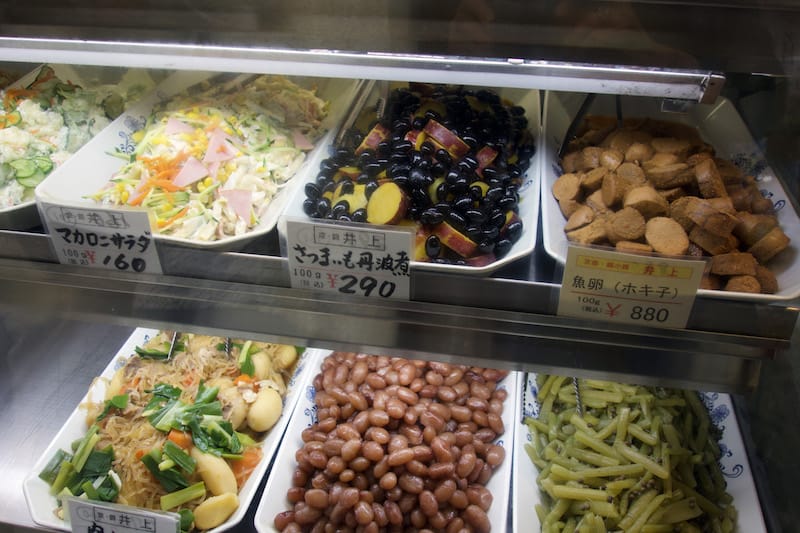
Many of the fish sellers in the market are now offering small meals. One of our favorites is Nishiki Daimaru. The proprietor will gladly take any fish for sale and prepare it as fresh sashimi, much as they do at Tokyo’s Tsukiji outer fish market. Customers are ushered to the back of the sales space and usually perch on small stools at a counter or table as business whirls around them. Many places also have small dishes ranging from raw and grilled oysters to mozuku, or vineyard seaweed, and batter fried tempura of various fish and vegetables.
It’s impossible to leave Nishiki Market without a stop for soymilk doughnuts at Konna Monju, purveyors of soymilk products including tofu and sweets. Their small and crispy mini-doughnuts are best eaten piping hot, fresh from the frying cauldron. They’re crispy on the outside and slightly silky within. They’re not overly sweet, with a hint of healthy indulgence. It’s easy to find the stall because it’s one of the longest lines at Nishiki. The small gems are sold in units of ten, which sounds like a lot, but they disappear quickly. We like to wash down the doughnuts with a soft soymilk ice cream cone – another guilty pleasure.
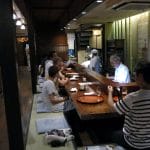 August 12, 2021 CB on the Road
August 12, 2021 CB on the Road
In the West, tofu is considered a boring dish desperately in need of other ingredients […] Posted in Tokyo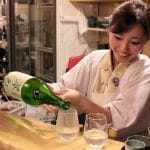 December 12, 2018 Best Bites 2018
December 12, 2018 Best Bites 2018
This was a year of culinary highs for sure, one that involved freshwater eel, lamb […] Posted in Tokyo April 5, 2018 Spring Fever
April 5, 2018 Spring Fever
Barcelona’s urban sprawl makes it easy to forget that the city is adjacent to two […] Posted in Barcelona
Published on November 01, 2018
Related stories
August 12, 2021
TokyoIn the West, tofu is considered a boring dish desperately in need of other ingredients to make it interesting. Not so in Japan and especially in Kyoto. Tofu is a well-known component of Kyoto regional cooking, and locals consider tofu to be the star of the show. When visiting Kyoto during November and December’s peak…
December 12, 2018
TokyoThis was a year of culinary highs for sure, one that involved freshwater eel, lamb ramen, sake and more. Kyuri Cucumbers at Sobaya Nicolas Following a visit to Kyoto’s Nishiki Market, I felt myself yearning for local kyo yasai, vegetables from the Kansai region of Japan. That night we were invited by a local artisan…
Come see what Spring is all about, on our Sants tour.
April 5, 2018
BarcelonaBarcelona’s urban sprawl makes it easy to forget that the city is adjacent to two fertile regions to the north and south, El Maresme and El Baix Llobregat, which provide numerous hyperlocal culinary treasures throughout the year. In spring as in other seasons, these treasures appear at markets and restaurants, their origins proudly displayed, sometimes…







































